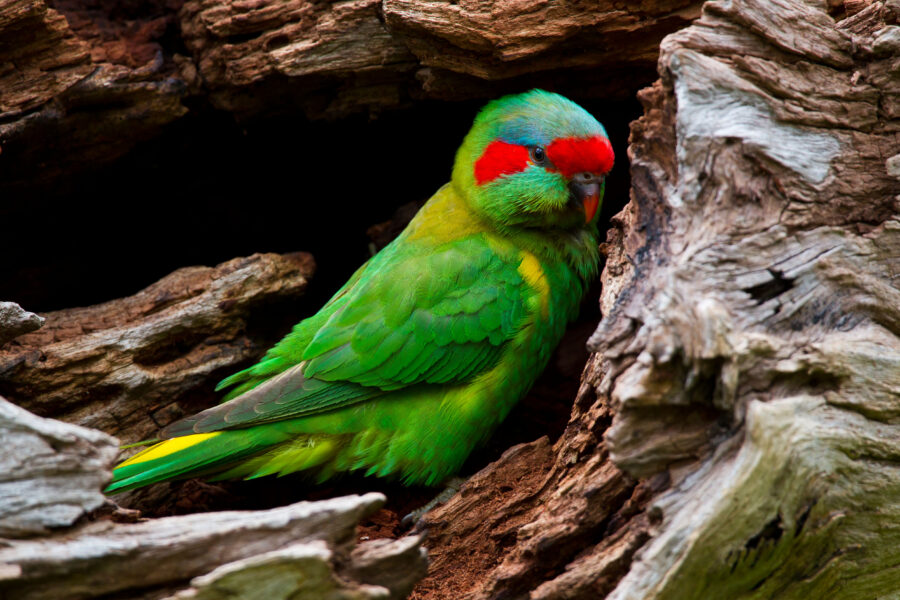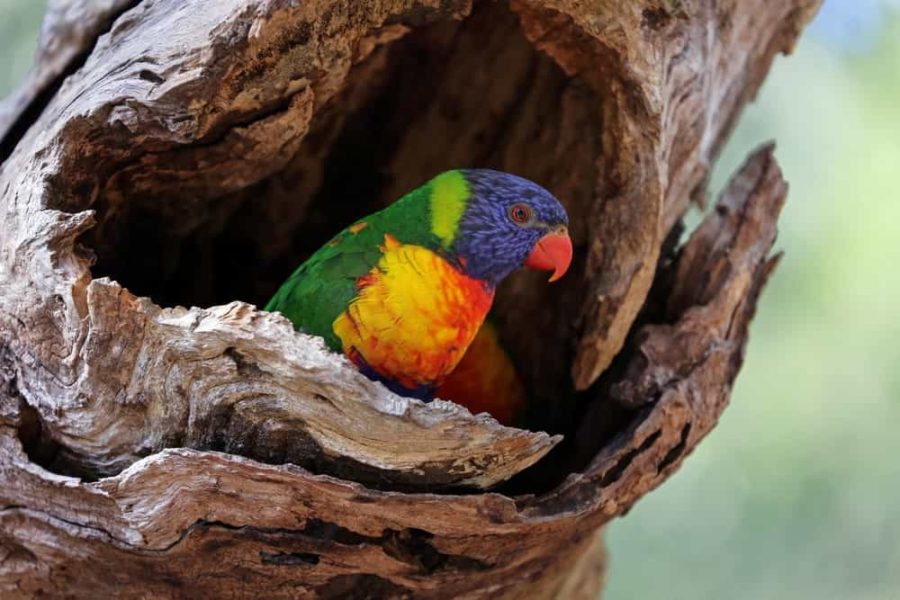Is the musk lorikeet Australia’s best-smelling bird?

Bec Crew
Bec Crew

The musk lorikeet (Glossopsitta concinna) has made a name for itself among collectors and enthusiasts for its distinctive scent. Depending on who you talk to, it’s a combination of honeyed florals and a sweet, earthy musk.
Endemic to south-central and eastern Australia, including Kangaroo Island and Tasmania, the musk lorikeet is a beautiful and highly social bird. It’s just as comfortable in urban parks and gardens as it is in open woodlands and forests, and like its noisy cousin, the rainbow lorikeet, the musk lorikeet really makes itself known – flocks of up to 100 individuals screeching at the top of their lungs are kinda hard to miss.
At 22cm long, the musk lorikeet is slightly smaller than a rainbow lorikeet. It’s mostly covered in bright green plumage, with a characteristic red band (or superhero mask!) across its forehead and yellow splotches on each of its wings. It’s also got a pretty blue smear above its eyes.
These birds have increasingly been moving into major Australian cities, such as Sydney and Melbourne, so keep your eyes peeled. They feed on nectar, pollen and insects, and don’t mind helping themselves to the bounty of whatever fruit trees they can get their claws on (much to the chagrin of orchard owners).
Musk lorikeets are a popular species for collectors, many of whom are fond of their odour.
“It’s like a mixture of roses and honey and berries and earthy musk. Amazing! If I could bottle the stuff I would be a millionaire!” says one owner.
“He smelled like the musk sticks we used to get as children. Best smelling bird in the world!” says another.
The scent isn’t for everyone. Some collectors can’t stand it. Others say they can’t smell a thing
The mechanism for how the musk lorikeet gets its scent is as yet unclear – the idea that birds have a distinctive smell is relatively new to science. However, researchers have found that the oil some birds produce via the preen (or uropygial) gland, primarily to preserve the feathers, also allows them to communicate with each other through body odour.
New Zealand’s endangered kakapo, for example, smells like “a mix of lavender and honey and dust”, “musty violin cases”, and “honey, papaya and the inside of an old clarinet case”, according to researchers (I’m sensing a theme here).
Cowbirds, on the other hand – a group of birds found in the northern hemisphere – smell to one researcher like cookies.
It’s an area ripe for research, so if you happen to get up close and personal with a musk lorikeet – or any Australian bird – take a whiff and see what you can smell.



